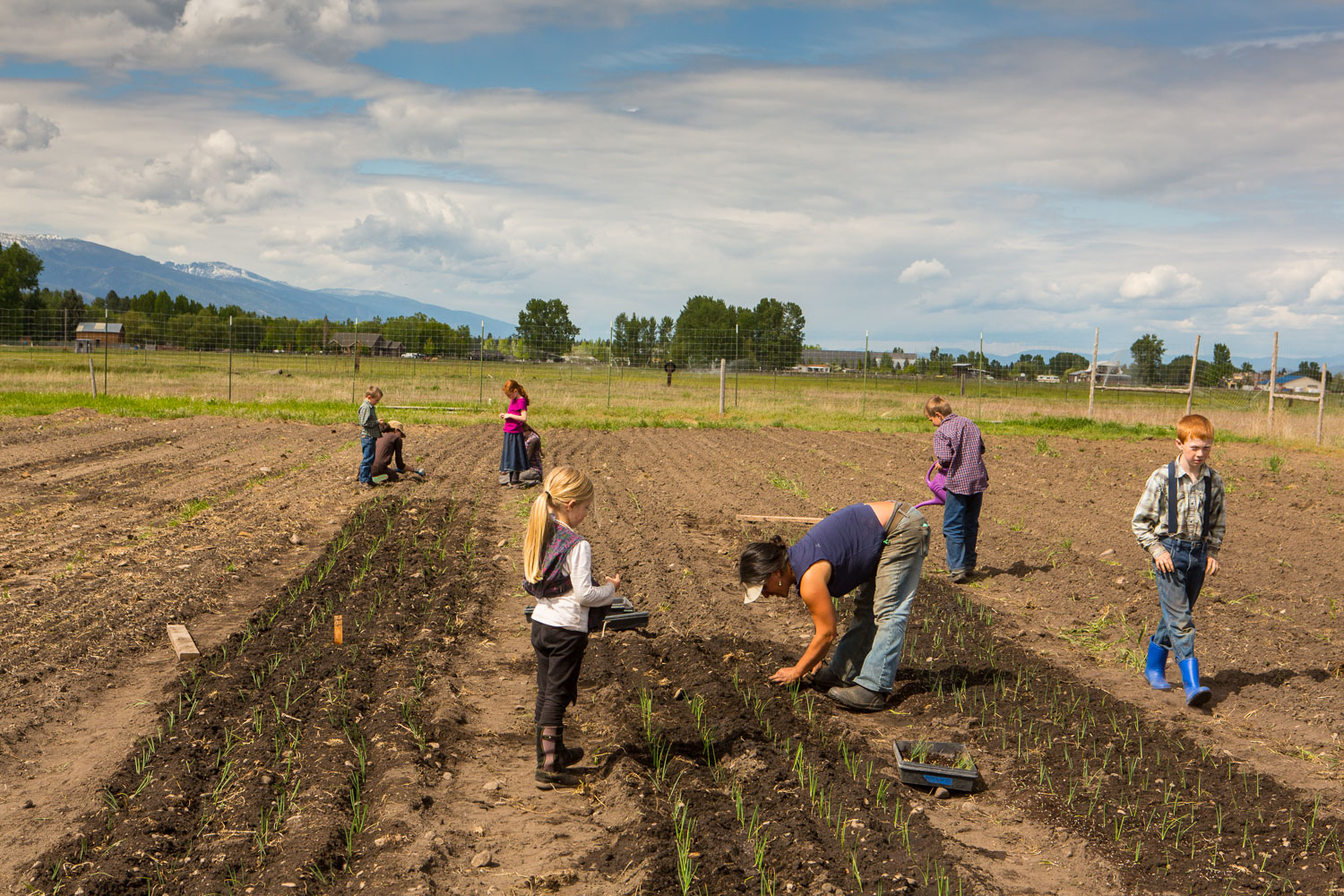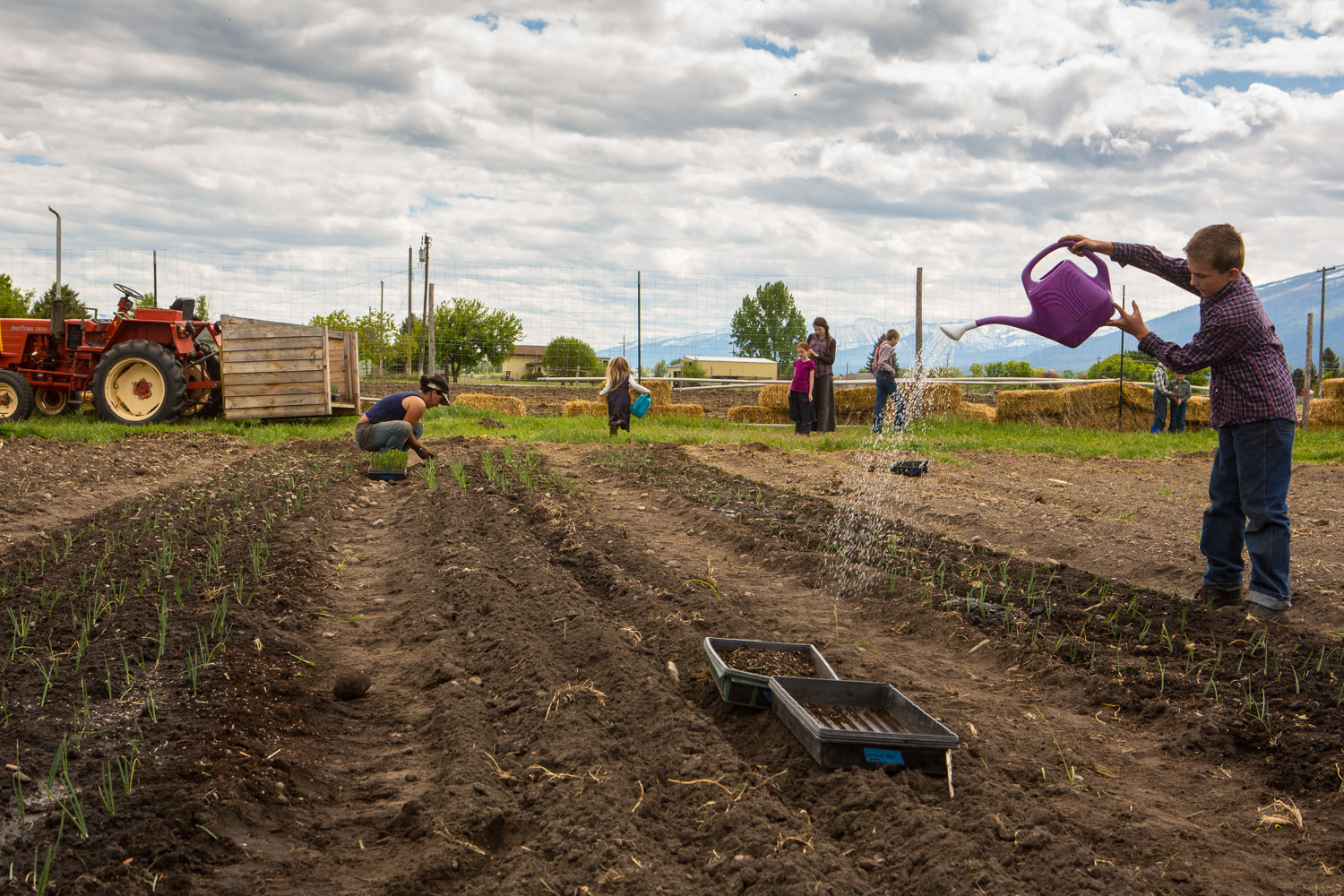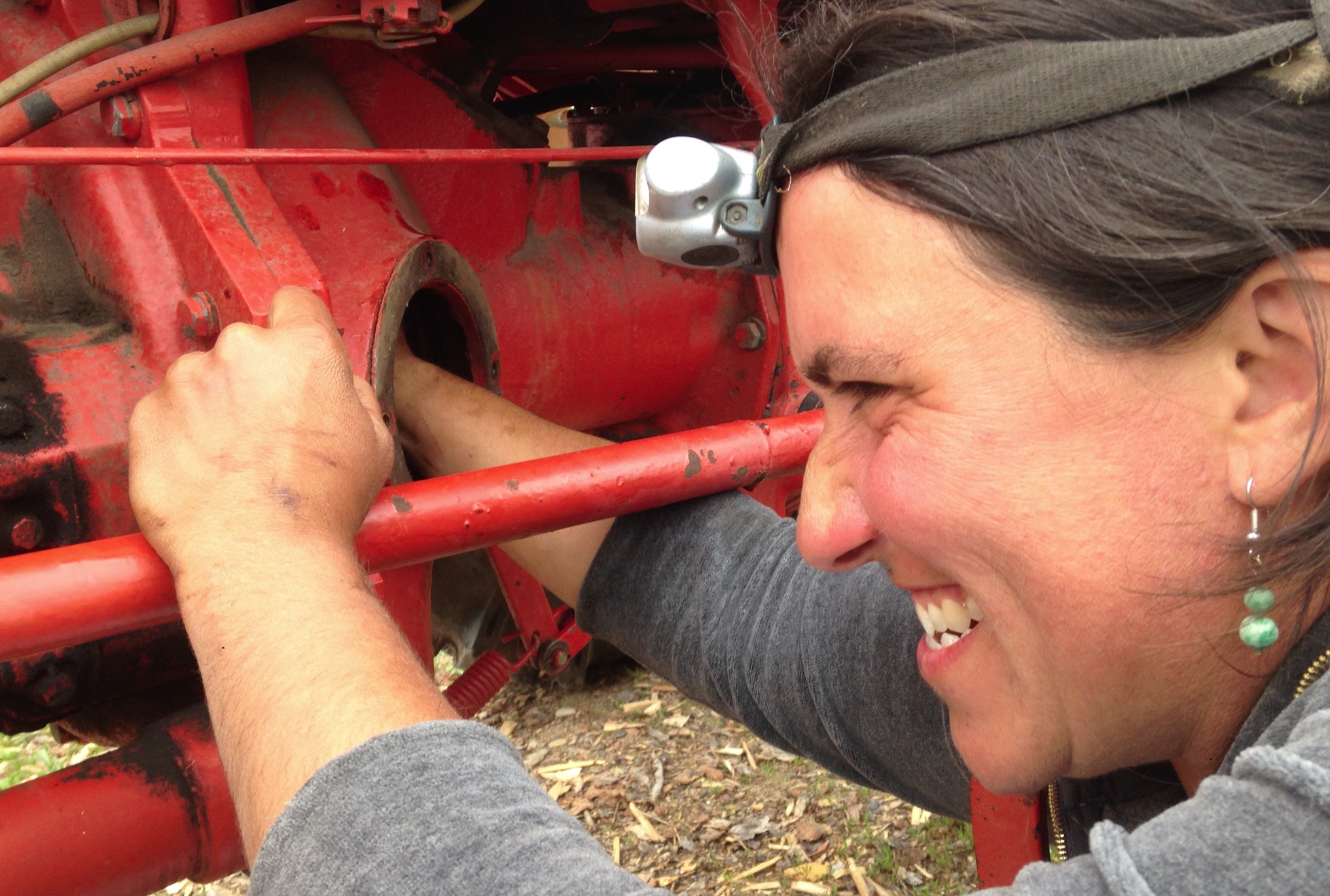Phil, behind the wheel in one of our farm gardens without brakes.
“I’ll just hang on!” It’s the kind of phrase that might make anyone cock their ear towards their partner uttering it over the deep rumble of an old truck engine. It broke my arugula-washing reverie that afternoon, snapping my head up away from the washing sink where I was trying to rush the process of triple-rinsing baby arugula leaves and plucking out the lamb’s-quarters weeds trying to masquerade as salad greens.
It might not have grabbed my attention so dramatically except that the rumble Noah was shouting over was the dump truck full of lawn clippings that our neighbor Phil had driven over, a huge gift of mulch loaded into the 1952 beast of a vehicle. When he stopped by earlier to let us know he’d finally gotten something up and running to haul the grass over, Phil had casuallymentioned, regarding the now-running truck he’d repaired “Of course, it doesn’t have any brakes just now, but out here on the flat, you don’t need brakes so much.” Eager to keep harvesting since we had just said “yes” to the largest order of greens mixes in our farm history, Noah and I both heard that statement, paused a moment, and then exchanged a glance that was basically a shrug of “well, ok.” Phil is a good bit past 70 but has reigned as patriarch of our little dead-end gravel road for many years, and he's just the sort of guy you trust. If he figured he could bring us a load of mulch with no brakes, I wasn’t going to let it get in the way of my greens packing.
When I looked up from the washing sink, Noah was up in the top of the elevated dump truck bed, and Phil was climbing into the cab to pull the truck forward a bit to get more of the grass out. It was the first time all day that I held still for a moment, trying to watch and judge just how precarious this “hang on” might be. It is my fond hope that 30 or 40 years from now Noah will be the chatty helpful old-man-neighbor of Bell Lane who has every tool a couple of young upstarts might want to borrow, and is still showing off the chicken-plucker he built back in 2016. I can picture it clearly, an older and greyer Noah still wiry and caffeinated and ambitious, hosting visitors with coffee in hand and cracking himself up with puns about chickens and spinach varieties. But some days it seems the main challenge is ensuring that he manages to live long enough for that vision to come to fruition.
From the washing station, It was clear that there wasn’t much I could do to stop this “I’ll hang on” moment, but I still held my breath a little as I watched the pair of them finish the unload, Noah pushing grass out from the truck bed as Phil inched the brakeless dump truck forward. It all came out fine, in the end—the grass clipping got dumped, no one got hurt, nothing was even dented, and we almost (just barely) got the harvest in in time to meet the Western Montana Grower’s Co-op truck. We don’t quite know yet if we can pull off a similar feat with our farm and life in general.
Since that visit from Phil and his brakeless dump truck last week, we’ve joked often about being a farm with no brakes, and certainly no breaks. We’ve realized our farm and the season have been accelerating and at times it feels a good bit out of our control. We collapse into sleep sometime after dark each night, thoroughly spent but never quite caught up.
Even though it made me a little nervous, I think Phil has a point about brakes. When you are in flat, predictable, known terrain the brakes aren’t so crucial, really. You know the speed, you can see where you are and where you are going, and you can push forward when needed and coast to a stop at the right place. The problem with our brakeless farm at the moment is that we haven’t hit the flats yet. We have ideas of where we are and where we are going, but not enough experience to know for sure if we are on target. The learning curve for new farmers is notoriously steep, maybe also curvy, and we feel it daily and weekly as we try out best to hang on for this wild ride. Just barely beginning our third season of farming, not even on this land for three full years, we are just beginning to see the extent of what we do not know: balancing growing and tending and harvesting, direct sales and wholesales, volunteers, time, labor, effort and wear on both our own bodies and our equipment. We hope that over time we get closer to a level place, and we can ride the acceleration of summer knowing that we’ll coast back down in fall and land right where we need to, but we aren’t there yet.
Mary harvests Asian greens - faster and cleaner than ever - with our new greens harvester.
A few days ago we barreled past our average last frost date and a host of planting goals like a runaway truck (or a herd of sheep over a weak point of fence, also a recent experience). We wished that we could slow time down a little and catch up to the list of things due and overdue, but that isn’t how it works. We can’t put brakes on the season—June comes, ready or not, every year. And really, do we want to put the brakes on the farm? If we want it to support us, we need to achieve a certain velocity. I’ve had experience with old farm trucks, and I do know that the flip side of no brakes is the touchy brake that can send everyone pitching through the front window. We could use a good deal more breaks on this farm, but I’m wondering if we just have to accept that there may not be brakes, if we want it to go.
If we want to ride this farm to where it needs to get, we may need to concentrate on just steering and hanging on. Hanging on with both hands and maybe anything else we can wrap around a foothold. And that may be where we call on you all to help us hang on. You help tighten our grip when you visit us at market, when you sign up for or tell friends about our feed bag and CSA programs, when you show up with a cold drink and an hour to pull weeds. When the teenager in your family lights up at the thought that she gets a bag of salad mix of her very own this week. And when we write and share, we remember all of that, all of the reasons to hang on tight.
Most people would not fire up a truck with no brakes. Most people do not start a farm. But you’ve met us, right? We are not most people, and so far we are still hanging on.
Malaya ushers the mulch truck into one of our gardens.











